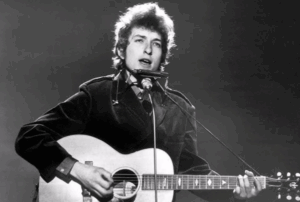20 Rock Bands That Followed Their Hit Album With A Flop

AC/DC / Facebook
Every artist wants to make a great record, but trying to follow it up with another smash is the real struggle. The pressure to replicate their first success has caused many musicians to struggle, leading to everything from poor sales to critical disappointment. Here, we examine 20 rock groups that had to find a worthy replacement to live up to their legendary albums.
1. AC/DC
AC/DC struggled with Flick of the Switch (1983) after the enormous success of For Those About to Rock We Salute You (1981). Fans and critics were disappointed by the album’s drab self-production and uninspired songs, which could not convey the same passion and intensity that made their last album a global success.
2. Aerosmith
Aerosmith’s reckless, hedonistic lifestyle started to wear thin with the success of Rocks (1976), which resulted in Draw the Line (1977). In contrast to the polished intensity of its predecessor, the album felt disconnected due to its chaotic production and muddy sound, which reflected the band’s internal conflicts. Fans were upset since, despite their high hopes, it was unable to achieve the same charm.
3. Alice Cooper
The 1973 album Muscle of Love by Alice Cooper fell short of expectations following the success of his album Billion Dollar Babies. The flopped record adopted a more direct, hard rock style, moving away from the big theatricality that made its predecessor a hit. Fans were disappointed because, despite its great points, it lacked the distinct spark and depth that had characterized Cooper’s earlier work.
4. Beach Boys
Following the critical success of Pet Sounds (1966), The Beach Boys’ Smiley Smile (1967) was a letdown. Recorded in Brian Wilson’s home studio, it lacked the polished complexity of its predecessor, coming across as disjointed and unfinished. The album’s stripped-down sound and experimental nature led to its disappointing chart performance, marking their lowest placement at the time and leaving fans yearning for the brilliance of Pet Sounds.
5. Black Sabbath
Many fans were let down by Black Sabbath’s Technical Ecstasy (1976) following the triumph of Sabotage (1975). In contrast to the hard-hitting variety and intensity of Sabotage, the album signaled a change as the band experimented with radio-friendly rock and emotional ballads. Because of this deviation from their distinctive sound, Technical Ecstasy struggled to engage listeners and fell short of its predecessor’s critical and financial success.
6. Bob Dylan
After the success of Nashville Skyline (1969), which earned Bob Dylan praise for his venture into country music, Self Portrait (1970) took a different turn. This album, packed with covers and odd choices, left listeners puzzled and critics divided. Rather than building on his country exploration, Dylan’s Self Portrait felt disjointed and lacked the focus that made Nashville Skyline so well-received, ultimately disappointing many who expected a similar follow-up.
7. David Bowie
David Bowie sought a wider audience with Tonight (1984) following the enormous success of Let’s Dance (1983). Even though the album did well on the charts, this attempt failed due to poor songwriting and inconsistent production. Bowie’s attempt at greater commercial appeal left both fans and critics disappointed because the album lacked the same inventiveness and intensity that made his previous record a worldwide success.
8. Eagles
Eagles found it difficult to equal the genius of Hotel California (1976) after its enormous success with The Long Run (1979). The record revealed the band’s exhaustion from touring nonstop and internal conflicts, which prevented them from capturing the same enchantment and hinted at their imminent dissolution. The Long Run lacked the vigor and unity that made Hotel California such a classic record, despite a few successes.
9. Iron Maiden
Iron Maiden adopted a more direct strategy with No Prayer for the Dying (1990), following the grandiose Seventh Son of a Seventh Son (1988). Fans who had enjoyed the intricacy and progressiveness of its predecessor were unimpressed by the return to rawer hard rock. The album’s more straightforward sound left many wishing Seventh Son had more depth, making it a disappointing sequel.
10. John Lennon
John Lennon’s Some Time in New York City (1972) was a huge disappointment following the triumph of Imagine (1971). The album fell short of its predecessor’s lofty standards and was criticized for its self-indulgence and overuse of clichés. Fans were dissatisfied with its lack of depth and content, making it one of Lennon’s poorest post-Beatles attempts.
11. Judas Priest
Judas Priest’s Point of Entry (1981) did not live up to the success of British Steel (1980). The album didn’t connect with audiences as much as its predecessor because it lacked incisive songwriting and catchy melodies. Because of the disarray caused by the band’s change in direction and sound, Point of Entry is one of the band’s less well-liked albums.
12. Kiss
Kiss took a bold turn with Dynasty (1979), chasing trends and embracing disco with the hit “I Was Made for Lovin’ You.” While the album had commercial appeal, it alienated many longtime fans who preferred the hard rock edge of Love Gun (1977). The shift in style felt inauthentic to their roots, leaving Dynasty as one of the band’s more divisive releases.
13. Meat Loaf
Following Bat Out of Hell’s enormous success in 1977, Meat Loaf’s Dead Ringer (1981) failed to live up to the hype. Burnout and vocal problems plagued the record, which received negative reviews and failed to capture the magic of its predecessor. Dead Ringer, despite its best attempts, was unable to replicate Bat Out of Hell’s fervor and broad popularity.
14. Metallica
After Metallica (1991) shot to fame, the band unexpectedly changed course and moved away from their metal roots with Load (1996). The band went through a difficult period after the album’s change in sound offended some fans and drew criticism. The years that followed were challenging since Load was unable to match Metallica’s enormous popularity, leaving the band unsure of what to do next.
15. Paul McCartney
The success of Tug of War (1982) was followed by the failure of Paul McCartney’s Pipes of Peace (1983). Many reviews pointed to the album’s repetitive lyrics and predictable songwriting as reasons why it fell short of expectations. Despite great expectations, it failed to connect with listeners as well as its predecessor, which was a rare setback in McCartney’s post-Beatles career.
16. Pearl Jam
After Vitalogy (1994) became a huge hit, Pearl Jam’s No Code (1996) left both critics and fans perplexed. The album fell short of the lofty standards set by its predecessor due to its inconsistent tone and a few filler tracks. Because of its more experimental style, No Code didn’t connect as well and found it difficult to match the vigor and praise of the band’s previous work.
17. Peter Frampton
Following the enormous popularity of Frampton Comes Alive! (1976), I’m in You (1977) by Peter Frampton takes a different approach. Frampton Comes Alive’s raw, hard-rock edge was lost as the record leaned into his image as a pinup model. What a hit. Fans didn’t like the change in style, which resulted in a poor reaction and poor sales.
18. Pink Floyd
The Wall (1979) was a huge hit, so Pink Floyd’s follow-up, The Final Cut (1983), seemed like a big change. Roger Waters adopted a more solo-oriented strategy, substituting ponderous arrangements and forceful political messaging for The Wall’s stirring anthems. Fans were disappointed by the less captivating experience, which marked a dramatic change from the band’s previous, more dynamic sound.
19. The Rolling Stones
The Rolling Stones’ Goats Head Soup (1973) felt like a disappointment following the enormous success of Exile on Main St. (1972). The album was a slow, worn-out sequel that failed to capture the same unadulterated intensity and revolutionary attitude. Instead of capitalizing on that momentum, it lacked the intensity of its predecessor, giving listeners the impression that the band was coming down from the ecstatic highs of Exile.
20. The Smashing Pumpkins
The Smashing Pumpkins Adore (1998) signaled a dramatic change in style after Mellon Collie and the Infinite Sadness (1995) achieved enormous popularity. It seemed different from their previous success, adopting a more muted, electronic-driven sound. Instead of building on the momentum of their previous success, the album’s introspective tone and gentler approach suggested internal band conflicts and signaled a time of change and tension.


















